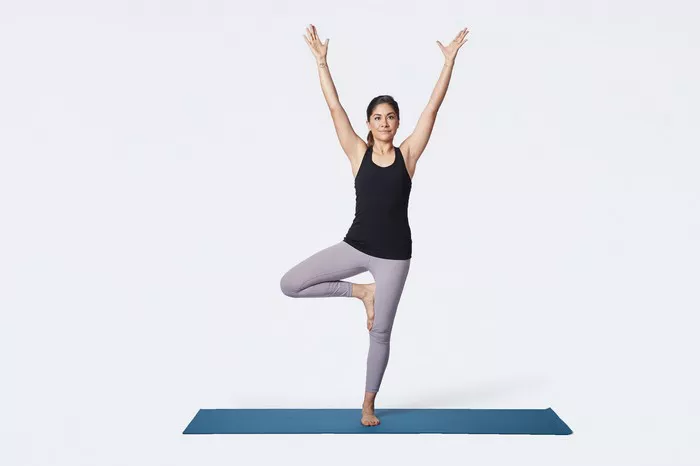Creating a personalized yoga routine is essential for achieving a balanced, fulfilling practice. Whether you’re a beginner or an experienced yogi, developing a routine that caters to your needs, goals, and lifestyle can enhance your physical, mental, and spiritual well-being. This article will guide you through the steps of building a yoga routine, ensuring it’s sustainable, effective, and enjoyable.
1. Set Your Intentions
Before you start designing your yoga routine, it’s crucial to establish your intentions. Ask yourself what you hope to achieve through your practice. Common goals include:
- Improving flexibility
- Building strength
- Reducing stress
- Enhancing mindfulness
- Deepening your spiritual practice
Your intentions will guide your practice and help you stay motivated. Write down your goals and refer to them regularly to stay on track.
2. Assess Your Current Level
Understanding your current fitness level and yoga experience is vital for creating a routine that’s challenging yet achievable. If you’re a beginner, focus on foundational poses and gradually progress to more advanced asanas. If you’re more experienced, you can incorporate advanced poses and longer practice sessions.
3. Choose the Right Style
There are various styles of yoga, each offering unique benefits. Choose a style that aligns with your goals and preferences:
- Hatha Yoga: Ideal for beginners, focuses on basic poses and breathing techniques.
- Vinyasa Yoga: A dynamic, flowing style that synchronizes breath with movement.
- Ashtanga Yoga: A rigorous, structured practice with a set sequence of poses.
- Yin Yoga: Slow-paced, focusing on deep stretching and relaxation.
- Restorative Yoga: Uses props to support the body in restful poses, promoting relaxation and healing.
- Power Yoga: A more intense, fitness-based approach to yoga.
Experiment with different styles to find what resonates with you.
4. Plan Your Sessions
Determine the frequency and duration of your practice. Consistency is key, so choose a schedule that you can realistically maintain. Beginners might start with 20-30 minute sessions, 2-3 times a week, gradually increasing as they become more comfortable.
For each session, plan a sequence that includes:
- Warm-Up: Gentle movements to prepare the body (e.g., Cat-Cow, Child’s Pose).
- Core Practice: A mix of standing, balancing, seated, and supine poses.
- Cool-Down: Relaxing poses and stretches to wind down (e.g., Forward Fold, Supine Twist).
- Savasana: A final relaxation pose to integrate the practice.
5. Incorporate Breathwork and Meditation
Breathwork (pranayama) and meditation are integral parts of a comprehensive yoga practice. Include breathing exercises like Ujjayi (Victorious Breath) or Nadi Shodhana (Alternate Nostril Breathing) to enhance focus and energy flow.
End your sessions with a few minutes of meditation to calm the mind and center yourself. Techniques such as mindfulness meditation, guided visualization, or mantra repetition can be effective.
6. Listen to Your Body
One of the most important aspects of building a yoga routine is tuning into your body. Pay attention to how you feel during and after each session. Adjust your practice based on your energy levels, physical condition, and emotional state.
Never push yourself to the point of pain or discomfort. Yoga should be a nourishing and enjoyable experience.
7. Seek Guidance
While self-practice is valuable, attending classes with a certified yoga instructor can provide invaluable guidance. Instructors can help correct your alignment, introduce new techniques, and offer personalized advice.
Consider joining a local studio or online yoga platform to enhance your practice and stay motivated.
8. Create a Dedicated Space
Having a designated space for your yoga practice can help you stay consistent. Choose a quiet, clutter-free area in your home where you can practice without distractions. Invest in a good-quality yoga mat and any necessary props, such as blocks, straps, and bolsters.
Personalize your space with items that inspire you, like candles, incense, or inspirational quotes.
See Also: How to Decorate a Yoga Room: 15 Creative Ideas
9. Stay Consistent
Consistency is crucial for reaping the benefits of yoga. Establish a routine that fits into your daily life and stick to it. Even on days when you’re short on time, try to squeeze in a quick practice.
Remember that yoga is a journey, not a destination. Progress may be slow, but the key is to stay committed and patient.
10. Reflect and Adjust
Regularly reflect on your practice and assess your progress. Keep a yoga journal to track your sessions, noting how you feel before and after practice, any challenges you encounter, and milestones you achieve.
Based on your reflections, adjust your routine as needed. If certain poses become too easy, incorporate more advanced variations. If you notice areas of tension or imbalance, add poses that target those areas.
Sample Yoga Routine
To give you a starting point, here’s a sample yoga routine for a balanced practice:
Warm-Up (5-10 minutes):
- Child’s Pose (Balasana): 2-3 minutes
- Cat-Cow Pose (Marjaryasana-Bitilasana): 5-10 rounds
- Downward-Facing Dog (Adho Mukha Svanasana): 1-2 minutes
Core Practice (20-30 minutes):
- Sun Salutations (Surya Namaskar): 3-5 rounds
- Warrior I (Virabhadrasana I): 1 minute per side
- Warrior II (Virabhadrasana II): 1 minute per side
- Triangle Pose (Trikonasana): 1 minute per side
- Tree Pose (Vrksasana): 1 minute per side
- Seated Forward Bend (Paschimottanasana): 2-3 minutes
- Bridge Pose (Setu Bandhasana): 1-2 minutes
Cool-Down (5-10 minutes):
- Supine Twist (Supta Matsyendrasana): 1-2 minutes per side
- Happy Baby Pose (Ananda Balasana): 1-2 minutes
Savasana (5-10 minutes):
- Corpse Pose (Savasana): 5-10 minutes
Conclusion
Building a yoga routine is a deeply personal and rewarding process. By setting clear intentions, choosing the right style, and planning balanced sessions, you can create a practice that supports your physical, mental, and spiritual growth. Remember to stay consistent, listen to your body, and seek guidance when needed. With dedication and patience, your yoga practice will become a cornerstone of your well-being.
Related topics:
























